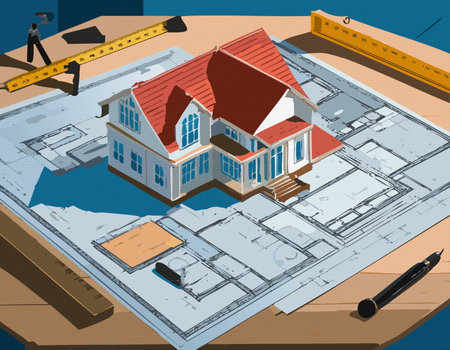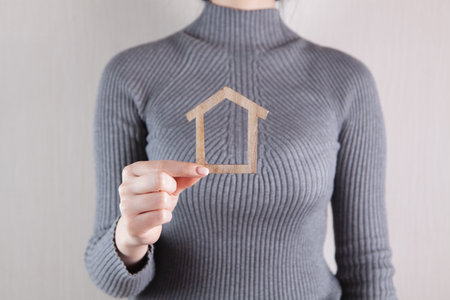1. Recognizing the Signs Your Home Is Overpriced
When selling your home, pricing it right from the start is crucial. But even with research and advice, sometimes the market tells you that your asking price may be too high. It’s important to recognize these signs early so you can make timely adjustments and avoid having your listing sit on the market for too long.
Common Indicators Your Price Might Be Too High
If your home has been listed for a few weeks without much activity, that could be a red flag. Here are some of the most common signs sellers encounter when their listing price doesnt align with current market expectations:
| Sign | What It Might Mean |
|---|---|
| No Showings or Very Few Showings | Buyers may be skipping over your listing because they feel its out of their budget or not competitive with similarly priced homes. |
| No Offers After Several Weeks | Even if you’re getting traffic, a lack of offers suggests that potential buyers don’t see enough value at your current price point. |
| Consistent Negative Feedback | If agents or buyers repeatedly comment that the home is overpriced or not worth the asking price, it’s time to reassess. |
Why Early Feedback Matters
The first few weeks after listing are critical. This is when your home gets the most exposure and attention from serious buyers. If youre not seeing traction during this period, its likely due to pricing. Buyers today are well-informed—theyre comparing your property with others in the same area and price range. If yours doesn’t measure up, theyll move on quickly.
Listen to Your Real Estate Agent
Your agent should be gathering feedback from showings and open houses. Use this information as a guide—especially if multiple people are pointing out the same concerns about value or pricing. Agents also have access to local data and trends that can help you evaluate how your home compares with others currently on the market or recently sold.
Tip:
A home that lingers on the market can develop a “stale” reputation, making future buyers wonder what’s wrong with it—even if nothing is. Acting early based on feedback can help you avoid this issue and keep buyer interest strong.
2. Analyzing Feedback From Showings and Open Houses
Once your home is listed, one of the most valuable tools you have is the feedback you receive from potential buyers and real estate professionals during showings and open houses. Learning how to gather and interpret this information can help you make smart pricing adjustments if needed.
Understanding Direct vs. Indirect Feedback
Feedback can come in two main forms: direct and indirect. Here’s how they differ:
| Type of Feedback | Description | Examples |
|---|---|---|
| Direct Feedback | Comments or opinions shared directly by buyers or agents after a showing. | “The price feels too high for the neighborhood,” “Loved the kitchen but not sure it’s worth the asking price.” |
| Indirect Feedback | Behavioral cues that suggest how buyers are reacting to your home. | No second showings requested, low online engagement, few or no offers after multiple viewings. |
How to Collect Feedback Effectively
Your real estate agent plays a key role in collecting feedback. Most agents follow up with buyer agents after showings to ask questions like:
- What did your client think of the price?
- How does this home compare with others they’ve seen?
- Is there anything that would prevent them from making an offer?
You can also use online tools or feedback forms during open houses to gather visitor impressions on pricing, condition, and overall appeal.
Identifying Patterns That Signal Pricing Issues
If youre consistently hearing similar comments, its time to pay attention. Here are some common patterns and what they might mean:
| Feedback Pattern | Possible Issue | Suggested Action |
|---|---|---|
| “Nice home, but its overpriced.” | The market doesnt support your asking price. | Consider a price reduction based on comparable sales. |
| No offers after several weeks on the market. | Your price may be too high for current demand. | Analyze recent listings and adjust accordingly. |
| Lack of traffic at showings or open houses. | The price may be turning off potential buyers before they even visit. | Tweak pricing strategy to increase visibility and interest. |
| “We liked it but chose another property.” | Your home may not be competitive at its current price point. | Look into what those other homes offered at similar prices. |
The Role of Your Real Estate Agent in Interpretation
A skilled agent will help you filter through the noise and focus on constructive insights. They’ll compare buyer reactions with data from competing listings to determine whether pricing is the true issue or if there are other factors at play, such as staging or needed repairs.
Tips for Making Smart Adjustments Based on Feedback
- Avoid emotional pricing — rely on market data and buyer input instead.
- If multiple sources mention the same concern, take it seriously.
- If youre getting plenty of traffic but no offers, consider adjusting your asking price within 2-5% to test buyer response.
- If feedback points more toward condition than price, consider minor upgrades instead of a price drop.
The goal is to respond strategically to what the market is telling you so your home doesn’t linger unsold. Listening closely to both what buyers say — and what they don’t — can give you a clear signal about whether your listing price needs tweaking.

3. Consulting With Your Real Estate Agent
When your home has been on the market for a while without much interest, it’s important to lean on your real estate agent for support. They’re not just there to list your home — they’re your partner in making smart pricing decisions based on real-time market feedback.
Reviewing the Comparative Market Analysis (CMA)
Your agent can provide you with an updated Comparative Market Analysis (CMA). This report compares your property to similar homes that have recently sold, are currently listed, or were taken off the market. It gives you a clear picture of where your home stands in terms of price and features.
| Property | Status | List Price | Sold Price | Days on Market |
|---|---|---|---|---|
| 123 Maple St. | Sold | $450,000 | $445,000 | 28 |
| 456 Oak Ave. | Active | $460,000 | – | 15 |
| 789 Pine Rd. | Expired | $475,000 | – | 90 |
Understanding Neighborhood Trends
Your agent will also help you look at local trends. Are homes selling quickly? Are prices going up or down? Have similar homes made recent price reductions? All of this information is useful when deciding how to adjust your asking price.
Questions to Ask Your Agent:
- What price range are buyers responding to right now?
- How does my homes condition compare to others in the area?
- Are there any seasonal trends we should consider?
- What kind of feedback are we getting from showings?
The Value of Professional Guidance
A good real estate agent doesn’t just give you data — they help you interpret it and make confident choices. If the market shows that your home is priced too high, your agent can recommend a new listing price that keeps you competitive while protecting your bottom line. Strategic adjustments based on facts and expert advice can make all the difference.
4. Timing Your Price Adjustment Strategically
When it comes to adjusting your home’s price after listing, timing is everything. Making a change too soon might look desperate, while waiting too long can cause your listing to go stale. Understanding the best windows for action helps you stay competitive in the market and attract serious buyers.
Understanding Key Time Windows
The first few weeks after listing are crucial. This is when your home gets the most visibility and buyer interest. If youre not seeing showings or offers during this time, it may be a sign that your price is off.
| Time Since Listing | Suggested Action |
|---|---|
| Week 1–2 | Monitor feedback closely; no immediate changes unless traffic is extremely low |
| Week 3–4 | If theres little interest or negative feedback on price, consider a modest adjustment |
| Week 5+ | If showings have dropped significantly, a more noticeable price reduction may be necessary |
Avoiding the “Desperation” Signal
You want to appear responsive—not desperate. A smart strategy is to make only one or two meaningful price adjustments rather than multiple small ones. Frequent changes can signal to buyers that you’re struggling to sell, which could lead to lowball offers.
Tips to Adjust Without Losing Buyer Confidence:
- Use buyer feedback: If multiple buyers mention the same concern about pricing, take it seriously.
- Aim for round numbers: Reducing from $510,000 to $499,900 can help your listing show up in new search filters.
- Avoid odd intervals: Don’t drop the price by $1,000 just for the sake of change—it won’t make an impact.
How Often Should You Adjust?
If you’re not under pressure to sell quickly, its okay to wait 2–4 weeks between adjustments. This allows time for the market to respond and keeps your strategy looking intentional. However, if youre on a deadline—like moving for a job—you may need to act sooner based on showing activity and online engagement.
The key is being proactive but measured. Pay attention to how long comparable homes in your area take to sell and adjust accordingly.
5. Repositioning Your Listing After a Price Drop
Dropping your home’s price can be an effective strategy, but to truly regain buyer interest, it’s important to refresh your listing and marketing approach. A price drop alone may not be enough if your property has already been overlooked. Here are some practical ways to reposition your home in the market:
Update Your Listing Photos
High-quality, updated photos can make a huge difference. If your previous photos were taken during a different season or didn’t showcase the homes best features, it’s time for a redo. Consider hiring a professional photographer who knows how to capture lighting and angles that appeal to buyers online.
Photo Tips:
| Do | Dont |
|---|---|
| Use natural lighting | Avoid dark or blurry images |
| Stage key rooms (like kitchen and living room) | Show cluttered or empty spaces |
| Highlight unique features (pool, fireplace, view) | Include too many similar shots |
Enhance the Description
Your listing description should tell a story and connect with buyers emotionally. After a price adjustment, revise the text to reflect the new value proposition. Focus on lifestyle benefits and recent updates rather than just square footage and specs.
Description Makeover Example:
| Before | After |
|---|---|
| “3 bed, 2 bath, 1,800 sq ft.” | “Spacious 3-bedroom retreat with modern upgrades and a sunny backyard perfect for weekend BBQs.” |
Utilize New Advertising Strategies
If your original marketing plan didn’t bring enough traffic, switch things up. Try promoting your listing on different platforms or targeting new demographics. Social media ads, email campaigns, and local real estate groups can help expand your reach.
Tactics to Consider:
- Create a Facebook ad campaign targeting buyers in nearby cities
- Email blast to local agents with updated info and new photos
- Add video walkthroughs or 3D tours for remote buyers
A refreshed listing shows potential buyers that you’re serious about selling and reinvigorates interest in your property—especially when combined with a strategic price adjustment.


